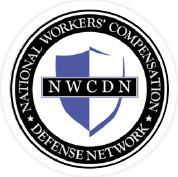New OSHA reporting rules bring big enforcement changes
By Jim Stanley, March 4, 2015
In the wake of new injury and illness reporting requirements put into place Jan. 1, OSHA has developed enforcement procedures that could significantly impact employers.
As outlined in an article by Rod Smith and his colleagues at the Sherman Howard law firm, once an initial report is received, OSHA will get back to the employer with a questionnaire that asks the cause of the accident and whether similar accidents have occurred before.
OSHA will then place the incident into Category 1, 2 or 3.
Category 1 includes fatalities, hospitalizations of two or more employees, repeat offenders, hazards covered by an emphasis program, imminent dangers, or injuries to minors. An on-site inspection will be automatic.
Category 2 incidents may result in an on-site inspection at the discretion of the Area Director. To fall into Category 2, incidents must involve two of the following factors:
- Continued exposure to the hazard
- Safety program failure such as lockout/tagout
- Exposure to serious hazards such as falls
- Temporary workers
- Referral from another government agency
- Employers with a prior inspection history
- Employers with a pending whistleblower complaint
- Employers in a cooperative program such as VPP
- Health issues such as chemical exposure or heat stress
The remainder of incidents will be placed in Category 3 and will result in a Rapid Response Investigation. Employers need to pay careful attention to what is involved here, since it differs significantly from the traditional “phone and fax” procedure previously in use.
Under a Rapid Response Investigation, employers will be requested to conduct their own investigations and report their findings along with supporting documentation. Employers will also be asked to fill out a form.
Sherman Howard is recommending that employers consider providing relevant information in lieu of completing OSHA’s form because of the nature of the questions it asks, such as “If you weren’t following your safety procedures, why not?”
The law firm also recommends that employers facing a reportable incident consider this:
“Are you even required to report the incident under the new rule? Some employers may choose to over-report incidents, but doing so puts them at risk of an on-site OSHA inspection or an inspection under OSHA’s new RRI. The new reporting rule looks simple, but contains unique definitions and exceptions. For example, is the incident “work-related?” Was the employee admitted to the hospital as an “in-patient?” How does the rule define a reportable “amputation?” If you are not clear on whether the incident is reportable, seek advice from a safety and health professional or counsel. As time goes on, OSHA will be issuing interpretation letters explaining what’s reportable and what’s not.”
It is important to note that a Rapid Response Inquiry may still result in an on-site inspection if OSHA so chooses.
Given that, it is important that employers be prepared for a visit from OSHA. For some tips on how to prepare, please read this article: Getting ready for an OSHA inspection.

